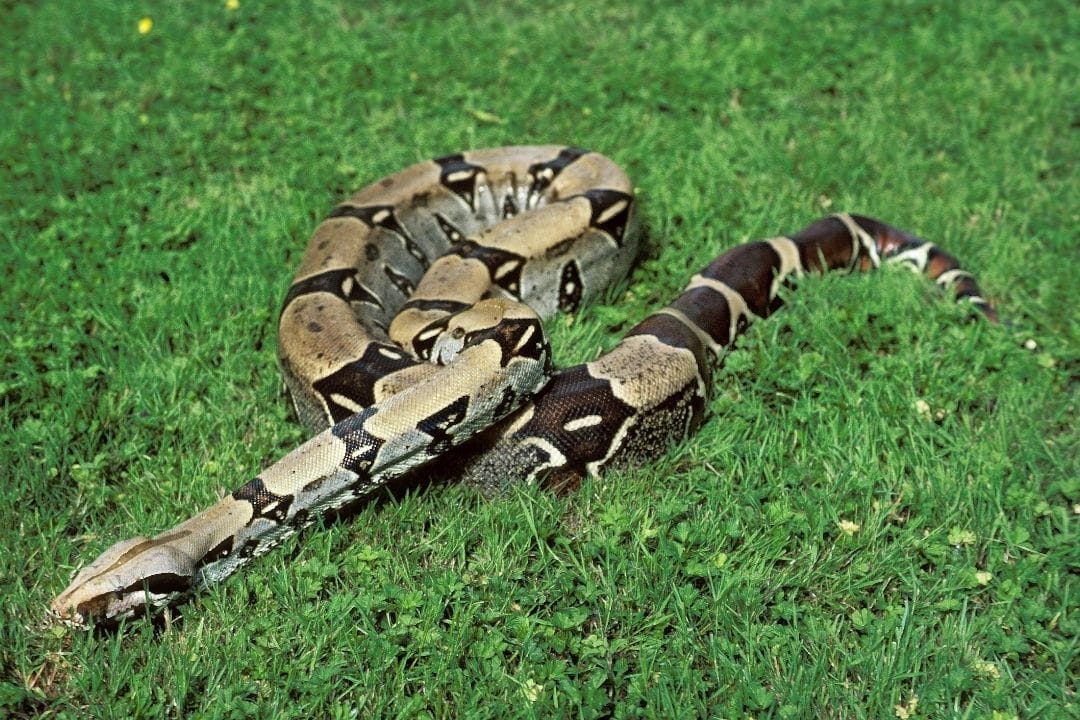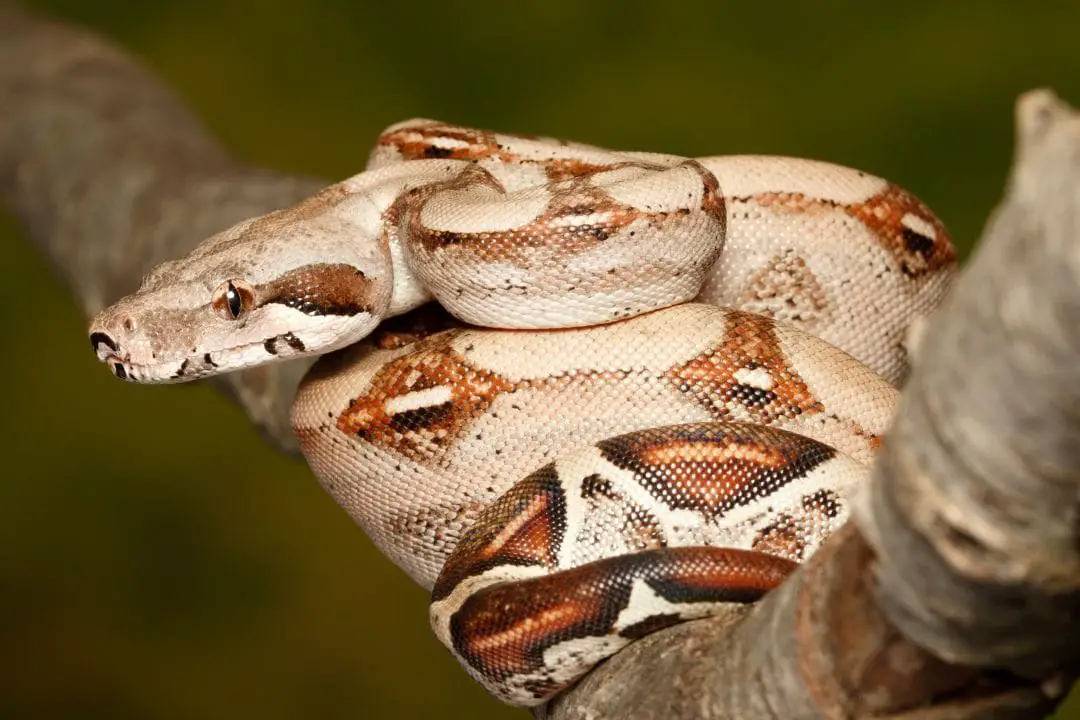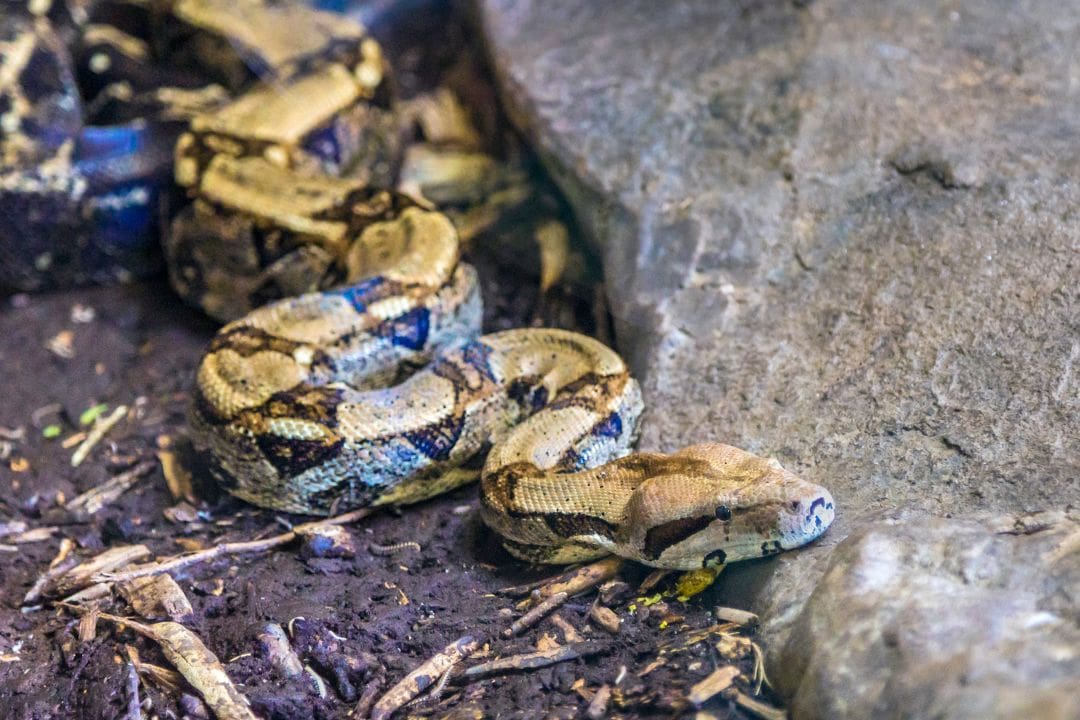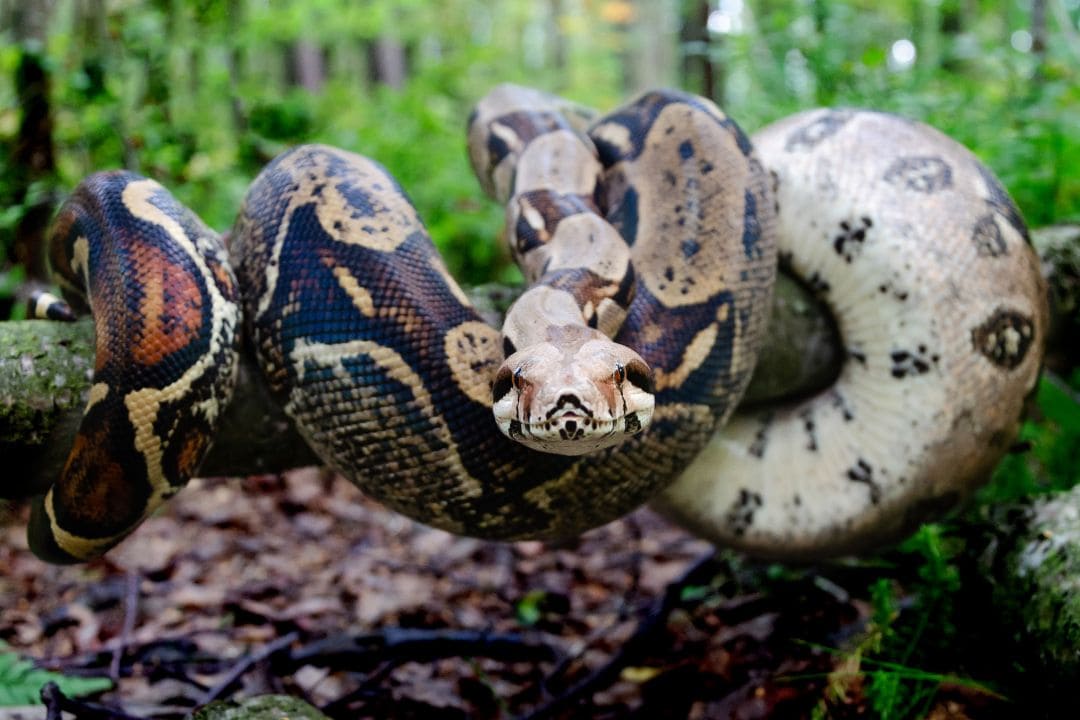The boa constrictor (Boa constrictor) and other members of the Boa genus are popular pet snakes and generally easy to care for.
Some subspecies and full species have been in the pet trade for so long that you can find an animal in nearly any color or pattern you could want. Since some subspecies can reach 12 feet long, you may be wondering:
Are boa constrictors dangerous as pets?
As pets, Boa Constrictors are not much more dangerous than any other medium-sized snake. While they can bite, most cases of serious injuries are from neglected, sick, or stressed snakes who hit a sensitive area.
Understanding Size
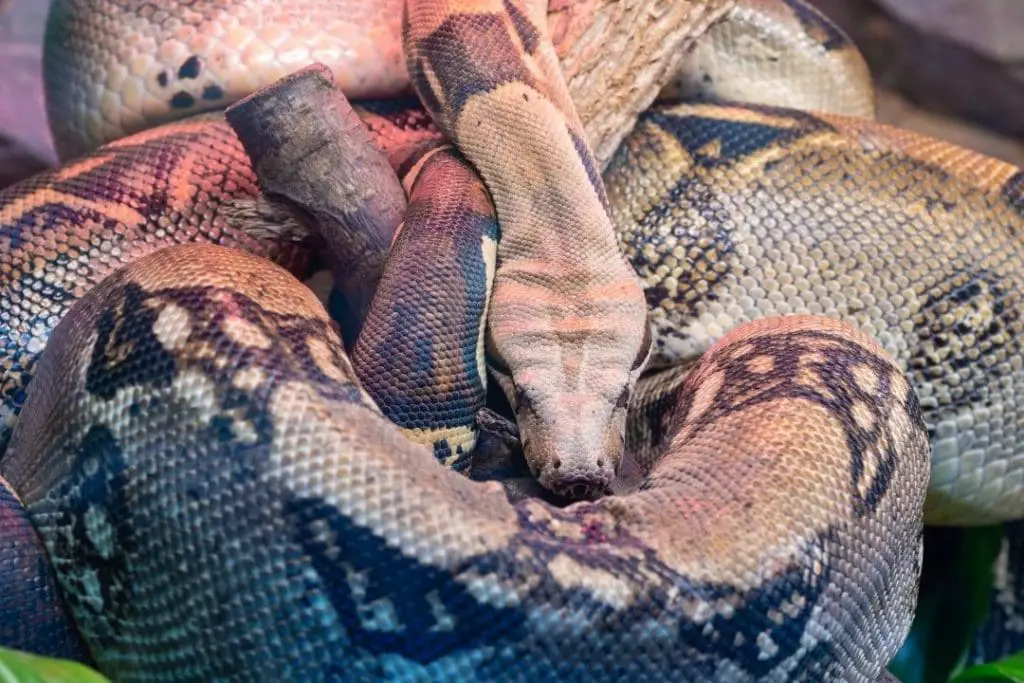
Some subspecies of boa constrictor can reach over 10 feet, like the common B. c. constrictor. The other species of true boas, Boa imperator and Boa sigma tend to stay under 7 feet in length.
Even the largest subspecies is still considered to be a medium-sized snake.
Large snakes are both long and heavy, like the green anaconda (Eunectes murinus) or the reticulated python (Python retuclatus).
Both of those snakes can top 19 feet long and weigh hundreds of pounds for adult females. In contrast, boa constrictors rarely top 12 feet and rarely weigh more than 40 pounds even for a massive female.
Reticulated pythons and green anacondas both hunt much larger prey than any boa will. Your pet boa constrictor can’t eat anything much larger than the widest part of its body or about 10% of its body weight.
This means even a huge female likely isn’t eating anything larger than 4 pounds.
This puts even babies outside of a boa constrictors prey size. While small pets are at risk, keeping your boa in a secure enclosure and feeding it properly will help.
You should also keep any other pets out of the room your snake lives in, for both of their safety. In contrast, the green anaconda has been known to eat jaguars and the reticulated python has been found to eat deer.
Danger to Humans
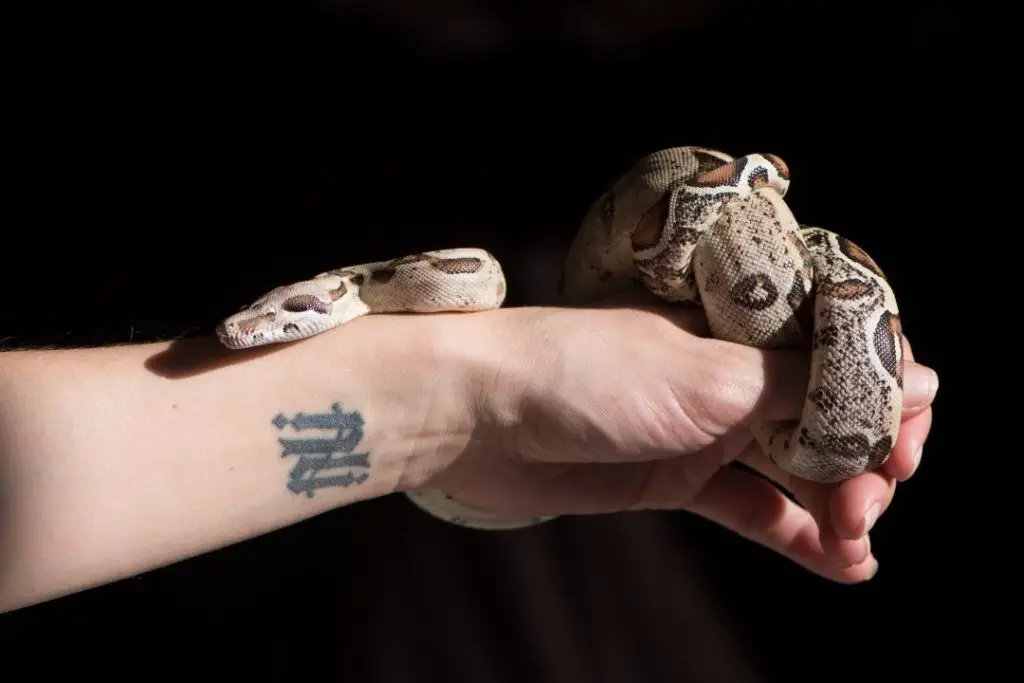
Overall, most boa constrictors don’t pose a serious threat to humans. This can be reduced if you take the time to handle your snake and train it so it is comfortable around your whole body.
Most reports of injury are caused by improper handling, neglect, or flat-out abuse. Boa constrictors are not aggressive animals, they can be defensive while young or injured.
Most other stories follow a similar trajectory. Poor husbandry and illness result in strikes from a defensive snake.
Humans are just too large to register as prey. Even a newborn is too large since the average birth weight for a healthy baby is 7.5 pounds.
Most other reports of injury from any snake species have another common thread of poor enclosure security. Snakes are much stronger than you would think and can force open the cheap mesh tops used to convert aquariums into enclosures.
Many inexperienced or poor snake keepers underestimate how strong a snake is and may use small weights or tape to try to keep their snake in. This results in a loose animal that may bite when it is found.
Danger to Pets
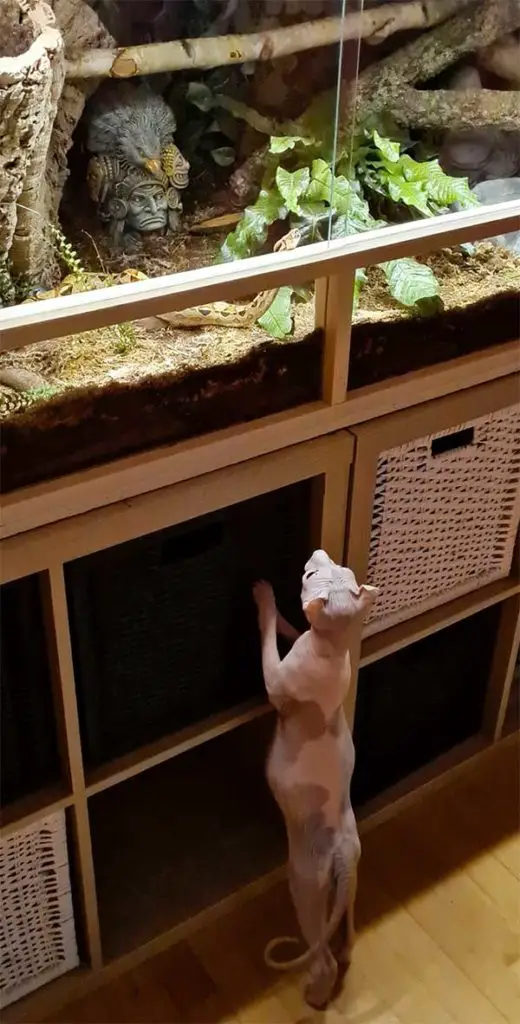
Smaller pets like birds, rodents, and small dogs are at risk from a loose or unsupervised boa constrictor. Boas will try to eat anything that they can fit in their mouth.
This can include many other common pets. If you have a boa constrictor and other small animals, make sure they do not interact at any point.
Even if your snake doesn’t view your other pets as food, it will likely see them as a predator. This will stress out both animals and can result in injury to either animal.
Keep snakes in a separate room if at all possible. Make sure the enclosure locks securely and inspect it regularly to ensure that your snake can’t wiggle out of a gap or past a weak point in the cage. This also puts your snake at risk of injury if it rubs against a sharp area as it tries to escape.
Are Boa Constrictor Bites Dangerous?
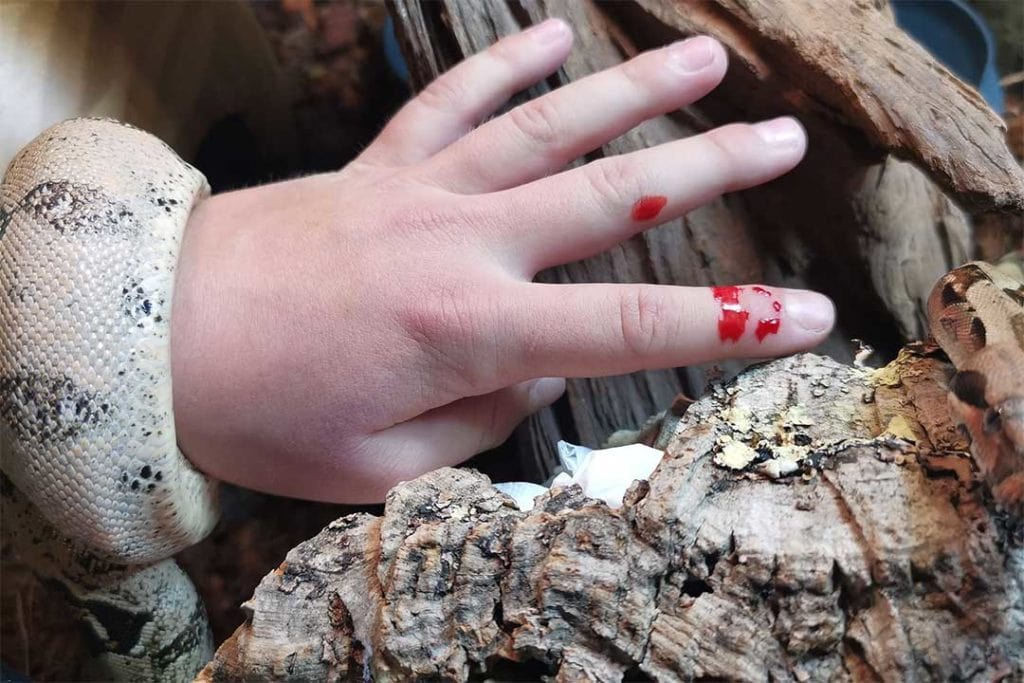
Boa constrictors are not venomous.
They kill by constriction, which kills small prey quickly by cutting off blood flow and causing cardiac arrest. A bite may hurt and bleed if it is an adult, but it won’t be much worse than a cat scratch. There have been cases of serious injury by a boa constrictor.
The injury was to the eye and happened when the snake was being bathed while dealing with a painful mouth infection. A bite to the face can be painful and cause more injury than bites elsewhere thanks to thinner skin and more blood supply to the area.
Even a feeding bite combined with constriction isn’t that dangerous. If you have a snake longer than 6 feet, you can help stay safe by having another person around who has experience handling snakes.
What to Do if a Boa Constrictor Bites
Staying calm is the first step. Since boa constrictor teeth face backward, trying to pull the snake off or jerking away can make an injury worse.
Pushing into the snake can help convince it to let you go. For a stubborn animal, cold water or mouthwash can be dripped on its face.
Cold temperatures and strong smells will both repel a snake and make it release you. Remember not to try to force the snake off, since you can easily break its teeth or jaws.
Once you have the snake off, be sure to handle it for long enough that it doesn’t think a bite will make you put it back. The wound can be treated like any other injury by sanitizing it and keeping it clean and covered.
If it is very deep, you can opt for medical care by a physician. Infections tend to be rare, but you should still monitor the wound.
Conclusion
Boa constrictors are not dangerous animals.
While their size makes them intimidating to some, they are not likely to bite a human unless they are defending themselves.
They should be kept away from other animals, but predators should always be kept away from potential prey.
If you have any questions or comments, please leave them below.
